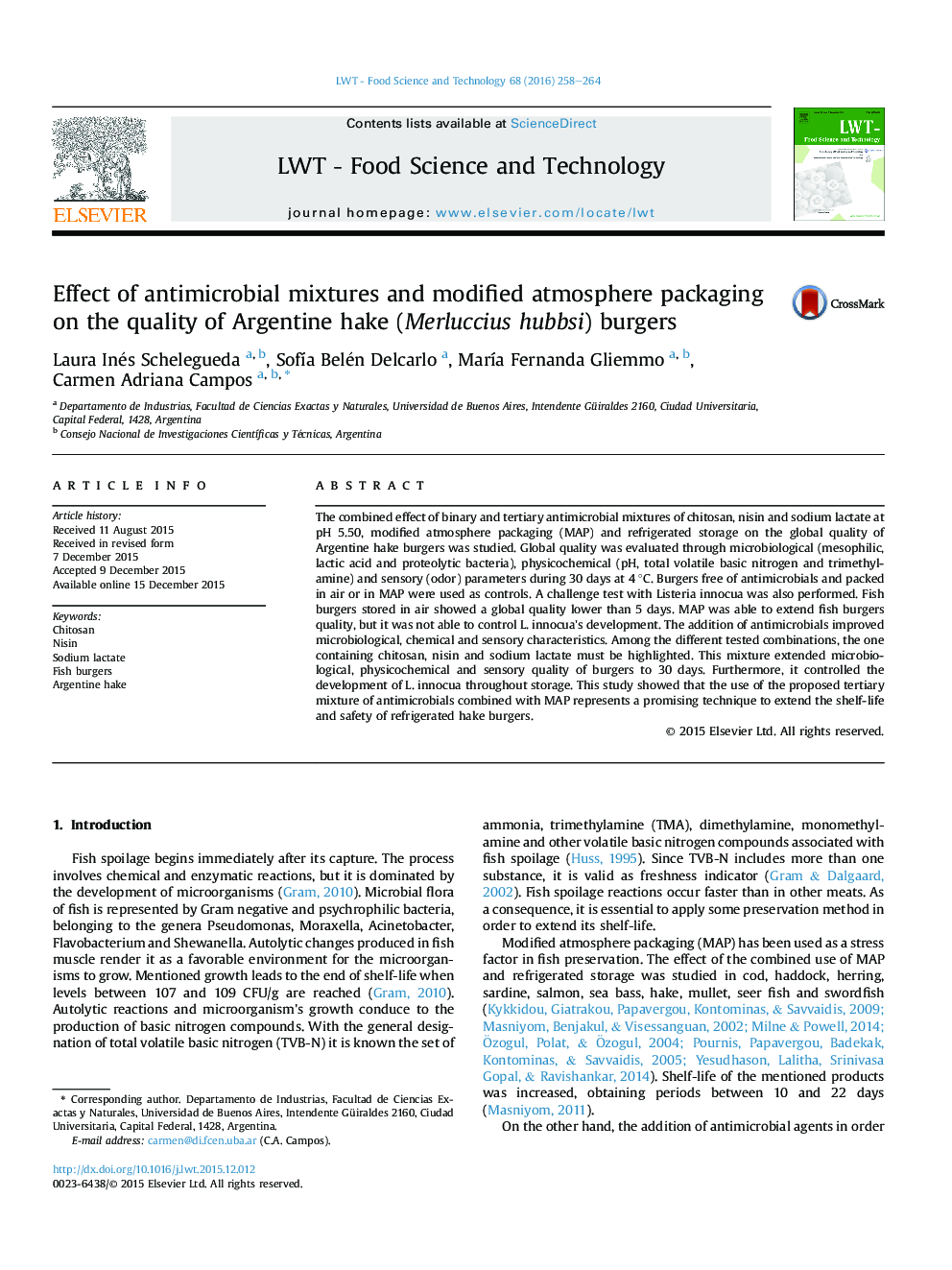| Article ID | Journal | Published Year | Pages | File Type |
|---|---|---|---|---|
| 4563644 | LWT - Food Science and Technology | 2016 | 7 Pages |
•Antimicrobial mixtures and MAP improved global quality of refrigerated hake burgers.•Antimicrobial mixtures and MAP inhibited L. innocua and spoilage flora in refrigerated hake burgers.•Chitosan, nisin, sodium lactate and MAP extended refrigerated burgers global quality to 30 days.
The combined effect of binary and tertiary antimicrobial mixtures of chitosan, nisin and sodium lactate at pH 5.50, modified atmosphere packaging (MAP) and refrigerated storage on the global quality of Argentine hake burgers was studied. Global quality was evaluated through microbiological (mesophilic, lactic acid and proteolytic bacteria), physicochemical (pH, total volatile basic nitrogen and trimethylamine) and sensory (odor) parameters during 30 days at 4 °C. Burgers free of antimicrobials and packed in air or in MAP were used as controls. A challenge test with Listeria innocua was also performed. Fish burgers stored in air showed a global quality lower than 5 days. MAP was able to extend fish burgers quality, but it was not able to control L. innocua's development. The addition of antimicrobials improved microbiological, chemical and sensory characteristics. Among the different tested combinations, the one containing chitosan, nisin and sodium lactate must be highlighted. This mixture extended microbiological, physicochemical and sensory quality of burgers to 30 days. Furthermore, it controlled the development of L. innocua throughout storage. This study showed that the use of the proposed tertiary mixture of antimicrobials combined with MAP represents a promising technique to extend the shelf-life and safety of refrigerated hake burgers.
